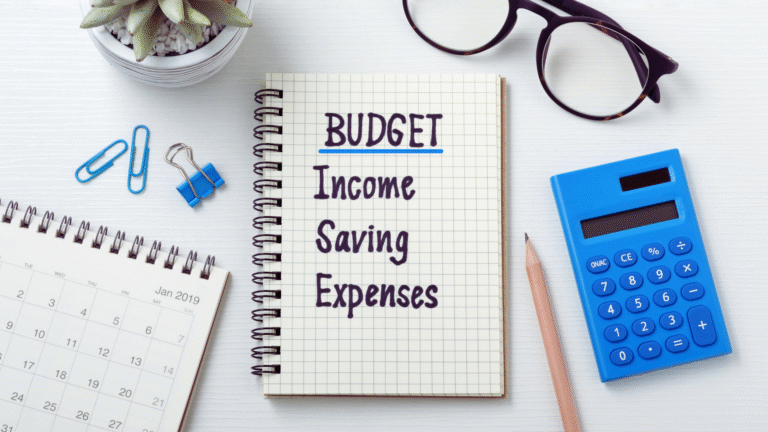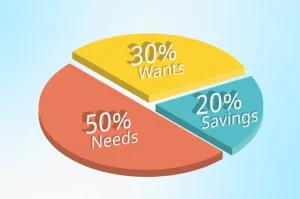Budgeting can be an invaluable way of keeping track of your spending and savings goals, helping to ensure they stay on track while helping to eliminate debt and save you from overspending on things such as dinners out, vacations, or gifts. Begin by compiling all of your monthly expenses using a budgeting app, spreadsheet, or bank statements as sources for charges that recur each month. Be sure to include fixed expenses like utilities, car payments, and insurance as well as variable ones like groceries and entertainment expenses in this list.
1. Fixed Expenses
Step one in creating a budget is tracking your spending. Write down all of your monthly expenses, both fixed and variable costs—rent or mortgage payment, utilities bill payment, food purchases, and transportation. Many budgeting apps help by outlining each category individually so they are easier to track each month.
Next, allocate 50% of your budget toward essential needs and 30% toward nonessential items like nights out and subscriptions. Review each category to identify savings opportunities—for instance, switching to a cheaper cell phone plan could save money when it comes to entertainment, or discovering free activities available nearby could save even more cash!
2. Variable Expenses
Assemble all your anticipated monthly expenses, such as rent or mortgage payments, groceries, utilities, debt payments, transportation, and entertainment costs. Review each expense to assess its necessity or desirability. Check whether its monthly expenses vary from month to month.
For items that fluctuate, review recent credit card and bank statements to estimate averages and identify where variable expenses could be cut back—such as comparison shopping, cutting back on ingredients, or coupon clipping. To control spending, try employing a budgeting method that utilizes cash envelopes for each category and only spending what’s in each envelope. This approach works best if you are adept at maintaining meticulous records.
3. Incidental Expenses
Incidental expenses can easily derail a budget if they go unmonitored and managed properly, including takeout meals, subscription services such as gym memberships or vacation costs, and annual expenses like property taxes or car registration fees or insurance premiums.
Calculate your monthly, post-tax income and create a budget around it. Remember to account for both steady sources of income, such as regular work or side hustles, as well as irregular sources, like freelance work. If expenses exceed expectations, extra spending might need to be cut back or savings targets increased accordingly.
4. One-Off Expenses
Budgets should reflect an accurate reflection of spending. One-off expenses must be tracked and/or reduced so as to not derail financial plans or become recurring costs over time. Start by determining your net income or “take-home pay.” This should encompass everything that enters your bank account each payday—your regular salary plus side hustle earnings and any other regular sources of revenue.
Some individuals prefer using an envelope budget, which requires allocating expenses in discrete categories using cash or an app dedicated to this method of management. This approach works well for those comfortable with maintaining careful records and setting spending restrictions.
5. Recurring Payments
No matter your method of financial tracking—cash envelopes, Goodbudget apps, or specific “sub-savings” accounts—it is crucial that you track your spending. Doing this allows you to see how monthly habits compare with planned expenses, helping identify ways of cutting costs and meeting financial goals more quickly.
Recurring charges are payments that are automatically debited from your credit card or bank account at regular intervals for products and services such as gym memberships, streaming subscriptions, and utility bills. Tracking these can help detect billing errors or price hikes early; digital tools like Eno from Capital One may make this process simpler.
6. Savings
As well as your regular monthly expenses, you may also have savings goals such as purchasing a car, taking an extravagant vacation next year, or other long-term financial goals. To stay on track with these goals, it’s essential that they are included in your budget each month in order to stay on track.
Start by calculating your after-tax income (also referred to as take-home pay). Next, use a budgeting app or tracking system to record actual spending over several months and compare actual to planned expenses and identify areas for improvement. Finally, review savings goals against your overarching financial goals.
7. Debt Reduction
No matter the source of your income, creating and following a budget will help you manage expenses, debt repayment, and savings goals in an effective way. Begin by classifying expenses according to needs versus wants: mortgage/rent, utilities, car payment, health insurance premiums, day care fees, and other essential costs may fall within this category.
Calculate your net income, or take-home pay, which is the amount left after taxes and payroll deductions have been deducted, before allocating some of it towards goals such as an emergency fund and other financial needs. Doing this can give you peace of mind even when unexpected expenses arise.
8. Savings & Investments
Budgeting allows you to track how your spending aligns with your financial goals and identify any unnecessary spending areas—like takeout meals, subscription services, or gifts you don’t really need.
Once you’ve determined your essential and important spending categories, set up an automatic transfer into a savings account for each category. An app such as Mint can help track expenses more closely so you stay on track to meet your savings goals and on track. Be sure to set aside bonuses or tax refunds as soon as they become available—they could save your financial future!
9. Other
Budgeting aims to help you spend less than what you earn, enabling you to save and meet financial goals more easily. Use our tips and tricks for setting up a monthly budget today and progress toward long-term financial security!
Keep a spending record, using either an app, spreadsheet, or notebook, so that you know where every dollar of your monthly budget goes each month. Be sure to include both fixed and flexible expenses so you don’t miss any important payments that arise throughout the year, such as holiday gifts or travel. This will also help ensure you don’t forget any necessary payments or costs like holiday presents or travel.




